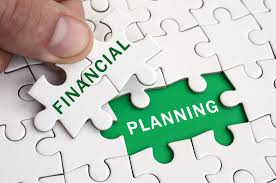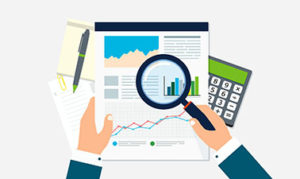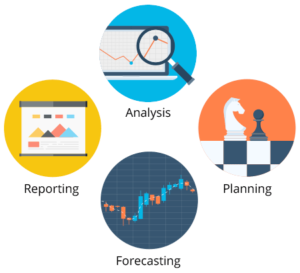Drafting a financial plan is one of the most important steps in drafting a business plan.
All business plans, whether a start-up or an existing business, should include the following:
- Profit and loss statement;
- Cash flow statement;
- Balance sheet;
- Sales forecast;
- Personnel plan; and
- Business ratios and/or a breakeven analysis (for companies that provide services).
Drafting a Profit and Loss Statement for Your Financial Plan
A profit and loss statement is an explanation of how your business made a profit (or incurred a loss) over a certain period of time. It’s a table that lists all of your revenue streams and all of your expenses and lists at the very bottom the total amount of net profit or loss.
There are different formats for profit and loss statements, depending on the type of business you’re in and the structure of your business ((Pty) Ltd, close corporation, co-operative, or not-for-profit organisations).
A typical profit and loss statement should include:
- Revenue (sales);
- Cost of goods sold (for companies that make and/or sell goods); and
- Gross margin (revenue less cost of goods sold).
You will also list your operating expenses, which are the expenses associated with running your business that aren’t incurred directly by making a sale. These are the fixed expenses that don’t fluctuate depending on the strength or weakness of your revenue in a given month (for example, rent, utilities and insurance).
Your gross margin less your operating expenses will give you your operating income.
Depending on how you classify some of your expenses, your gross profit will typically be equivalent to your “earnings before interest, taxes, depreciation and amortisation” (EBITDA), or how much money you made in profit before you take your accounting and tax obligations into consideration.
Your net income is your gross profit less your expenses for interest, taxes, depreciation and amortisation (ITDA).
Drafting a Cash Flow Statement for Your Financial Plan
A cash flow statement is an explanation of how much cash your business brought in, how much cash it paid out, and what its ending cash balance was.
Without a thorough understanding of how much cash you have, where your cash is coming from, where it’s going, and on what schedule, running your business will be difficult. Without the cash flow statement, which lays that information out neatly for lenders and investors, you’re not going to be able to raise funds. No business plan is complete without a cash flow plan.
The cash flow statement helps you understand the difference between what your profit and loss statement reports as income and what your actual cash position is.
How Cash Versus Accrual Accounting Affects the Cash Flow Statement
 There are two methods of accounting: the cash method and the accrual method.
There are two methods of accounting: the cash method and the accrual method.
The cash method means that you just account for your sales and expenses as they happen, without worrying about matching up the expenses that are related to a particular sale, or vice versa.
The accrual method means that you account for your sales and expenses at the same time. Matching revenue with the related expenses is referred to as the “matching principle”.
If you use the cash method of accounting in your business, your cash flow statement isn’t going to be very different from what you see in your profit and loss statement. The accrual method gives you the best sense of how your business operates, and you should consider switching to it if you aren’t using it already.
Cash accounting can get unwieldy when it comes time to evaluate how profitable an event or product was, and can make it harder to really understand the ins and outs of your business operations.
Drafting a Balance Sheet for Your Business Plan
A balance sheet is a summary of your business’s financial plan.
The balance sheet is standardised, and consists of three types of accounts:
- Assets (accounts receivable, money in the bank, inventory, etc.);
- Liabilities (accounts payable, credit card balances, loan repayments, etc.); and
- Equity (for most small businesses, this is just the owner’s equity, but it could include investors’ shares, retained earnings, stock proceeds, etc.)
Assets equal liabilities plus equity.
At the end of the accounting year, your total profit or loss adds to or subtracts from your retained earnings (a component of your equity). That makes your retained earnings your business’s cumulative profit and loss since the business’s inception.
Drafting a Sales Forecast for Your Financial Plan
 Your projections or forecast of what you think you will sell in a given period. A sales forecast is an ongoing part of the business planning process.
Your projections or forecast of what you think you will sell in a given period. A sales forecast is an ongoing part of the business planning process.
You should create a forecast that is consistent with the sales number you use in your profit and loss statement. How you segment and organise your forecast depends on what kind of business you have and how thoroughly you want to track your sales.
Some helpful questions to ask yourself are:
- How many customers do you anticipate?
- How much will you charge them?
- How often will you charge them?
Generally, you’ll want to break down your sales forecast into segments that are helpful to you for planning and marketing purposes. If you want to get really specific, you might break your forecast down by product or service, with a separate line for every product your sell or service you provide.
Along with each segment of forecasted sales, include that segment’s cost of goods sold (COGS). The difference between your forecasted revenue and your forecasted COGS is your forecasted gross margin.
Drafting a Personnel Plan for Your Business Plan
The importance of the personnel plan depends largely on the type of business you have. It should include a description of each member of your management team, explaining what they bring to the table in terms of training, expertise, and product or market knowledge. This is a justification of each team member’s necessity to the business, and a justification of their salary (and/or equity share, if applicable). This would fall in the company overview section of the business plan.
You can also use this section to list entire departments if that is a better fit for your business and the intentions you have for your business plan. This is also where you would list team members or departments that you’ve budgeted for but haven’t hired yet. Describe your ideal candidates and justify your budgeted salary ranges.
Additional Calculations You Might Find Useful
Business Ratios
If you have your profit and loss statement, your cash flow statement, and your balance sheet, you have all the numbers you need to calculate the standard business ratios.
Profitability ratios include:
- Gross margin;
- Return on sales;
- Return on assets; and
- Return on investment.
Liquidity ratios include:
- Debt-to-equity;
- Current ratio; and
- Working capital.
The most common ratios used by business owners and requested by bankers are gross margin, return on investment (ROI), and debt-to-equity.
Breakeven Analysis
 A calculation of how much you will need to sell in order to breakeven (how much you will need to sell in order to pay for all of your expenses).
A calculation of how much you will need to sell in order to breakeven (how much you will need to sell in order to pay for all of your expenses).
In determining your breakeven point, you’ll need to figure out the contribution margin of what you’re selling. Determine how high your sales revenue needs to be in order for you to breakeven.
If you create and present financial statements that all work together to tell the story of your business, and if you can answer questions about where your numbers are coming from, your chances of securing funding from investors or lenders are much higher.
Contact us for more information on drafting a financial plan for your company’s business plan.



